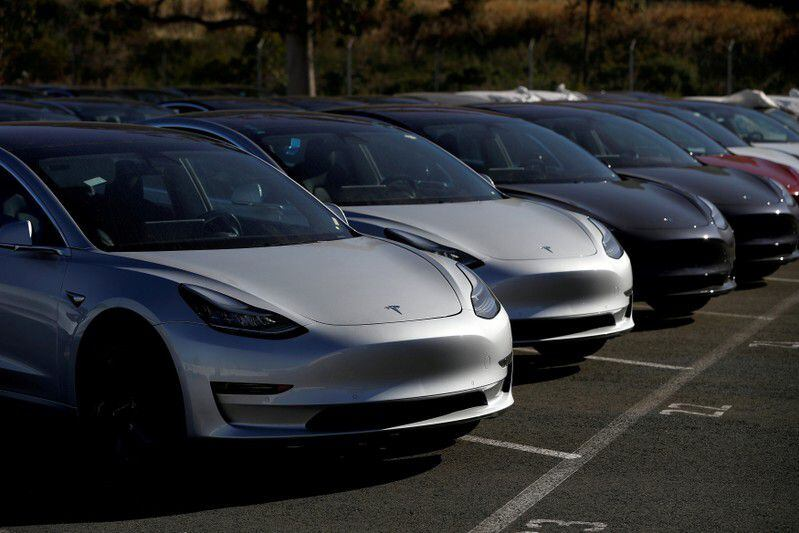In the fast-paced world of electric vehicles, Tesla continues to lead the charge with groundbreaking innovations. Recently, the company made headlines by announcing its exploration of alternative battery technologies that promise to revolutionize EV range and efficiency. This development is a game-changer for both the industry and consumers, as it addresses one of the most common concerns about electric vehicles: range anxiety. In this article, we’ll delve into how Tesla’s new battery technologies are set to enhance EV performance, explore the science behind these advancements, and offer insights on what this means for the future of sustainable transportation.
The Quest for Enhanced EV Performance
Exploring Tesla’s Battery Innovations
Tesla’s relentless pursuit of innovation has led to significant advancements in battery technology. The company is now exploring alternatives to traditional lithium-ion batteries, which have been the industry standard for years. Here are some of the key alternatives:
- Lithium Iron Phosphate (LFP): Known for its safety and affordability, LFP batteries are already in use in Tesla’s Model 3 vehicles in China. These batteries offer a longer lifespan and are less prone to overheating, making them an attractive option for future models.
-
Solid-State Batteries: These batteries replace the liquid electrolyte in traditional batteries with a solid material, potentially increasing energy density, enhancing safety, and reducing charging times. Tesla’s investment in solid-state technology could lead to significant breakthroughs in EV performance.
-
Silicon Anode Batteries: By replacing graphite with silicon in the battery’s anode, these batteries could increase energy density up to tenfold, leading to longer ranges and faster charging times.
The Impact on EV Range and Efficiency
Tesla’s exploration of these battery technologies is not just about innovation for innovation’s sake. The practical benefits are substantial:
- Increased Range: With higher energy density, these new battery technologies can store more energy in the same amount of space, allowing EVs to travel further on a single charge.
-
Improved Efficiency: Advanced battery technologies can enhance the overall efficiency of electric vehicles, reducing the energy consumption per mile and lowering the overall cost of ownership.
-
Faster Charging: Solid-state and silicon anode batteries offer the potential for significantly reduced charging times, making EVs more convenient for everyday use.
Practical Tips for Embracing New Battery Technologies
How to Charge Your EV Efficiently
As Tesla and other manufacturers roll out vehicles with these new battery technologies, here are some tips to make the most of your EV:
- Use Fast Chargers Wisely: While fast chargers can save time, they should be used sparingly to extend battery life. Opt for slower, overnight charging when possible.
-
Monitor Battery Health: Regularly check your vehicle’s battery health through its onboard system to ensure optimal performance.
-
Adapt to New Charging Stations: As infrastructure evolves, familiarize yourself with new charging station networks and apps, such as Tesla’s Supercharger network, which are expanding globally.
Where to Buy and Compare
If you’re in the market for a new EV with these advanced battery technologies, consider these steps:
- Research Tesla’s Latest Models: Stay informed about Tesla’s announcements on new battery technologies and which models they will be implemented in.
-
Compare with Competitors: Evaluate other EV brands like Rivian, Lucid Motors, and BYD to see how their battery technologies stack up against Tesla’s offerings.
-
Visit Showrooms and Test Drive: Experience the new technology first-hand by visiting showrooms and taking test drives to assess performance and comfort.
The Future of Sustainable Transportation
Trends and Predictions
Tesla’s commitment to battery innovation is a testament to the company’s vision for a sustainable future. Here are some trends to watch:
- Increased Adoption of EVs: As battery technology improves, expect a surge in EV adoption globally. With longer ranges and faster charging, EVs will become a viable option for more consumers.
-
Advancements in Recycling: As the industry grows, so will the need for efficient battery recycling methods, reducing the environmental impact of battery production and disposal.
-
Collaboration Across Industries: Expect increased collaboration between automakers, tech companies, and governments to develop the infrastructure necessary to support the growing EV market.
Conclusion
Tesla’s exploration of lithium-ion alternatives marks a pivotal moment in the evolution of electric vehicles, promising to boost EV range and efficiency significantly. As these technologies become mainstream, they will play a crucial role in reducing carbon emissions and promoting sustainable mobility. For consumers, this means more options, better performance, and a smoother transition to an electric future. So, are you ready to embrace the next generation of electric vehicles? Keep an eye on Tesla and other innovators as they drive us into a cleaner, greener future.

